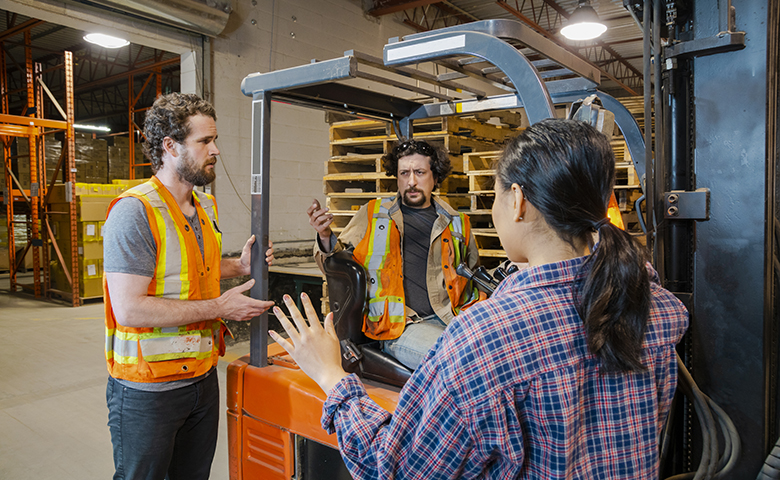If you’re an EHS professional, it’s understandable if you never took notice of Adam Grant’s latest book, Think Again. After all, the book is about the science and value of changing opinions and reconsidering preconceived notions. Not a single mention of workplace safety on the back cover, and no discussions of risk or injuries in the book either.
But, buried in a footnote about halfway through the book, there’s an offhand mention of a potentially powerful way to approach one of the most common and challenging issues for safety professionals—conducting effective safety interventions.
The general concept behind safety interventions is straightforward: you spot someone in the midst of an unsafe action, such as taking a shortcut, and then you intervene by having a conversation about the safest course of action. The goal is not only to correct the issue in the moment but also to get the worker to follow the safest course of action when a similar situation arises in the future.
Having effective safety conversations can be a challenge at the best of times, and they can often be downright hard when you’re intervening after spotting something unsafe. The very nature of the conversation can make it feel adversarial, and workers can often feel defensive from the outset. This is a problem because if the goal is to adjust workers’ actions in the future then a defensive posture can be a major hindrance to changes in perspective or behavior.
This is one of the reasons why experts in safety engagement preach the value of specific soft skills in safety such as taking a consistent approach to interventions and adopting a positive, no-blame mindset. And now, thanks to Adam Grant, there may be one more trick to add to your tool belt.
In Think Again, Grant says, “How well we take criticism can depend as much on our relationship with the messenger as it does on the message.” This will come as no surprise to anyone who has taken a 24/7 approach to safety, as they’ll recognize that when people think you care about them as a person (and also care, by extension, about their family), they’re more likely to buy into what you’re saying.
Grant goes on to say: “In one experiment, people were at least 40 percent more receptive to criticism after they were told ‘I’m giving you these comments because I have very high expectations and I know that you can reach them.’ It’s surprisingly easy to hear a hard truth when it comes from someone who believes in your potential and care about your success.”
This works so well in safety interventions for a few different reasons. First, it offers a healthy dose of positive reinforcement. Crucially, it also makes the conversation less confrontational. Instead of being you-versus-them, it shows that you’re both on the same side; you’re rooting for the same people (the worker) as well as the same outcome (no incidents).
So the next time you need to intervene in a potentially unsafe situation, take a moment to tell the worker that you’re on their side and that you believe in their ability to meet your high safety standards. It could be the secret that will encourage them to recalibrate their actions in the future.

